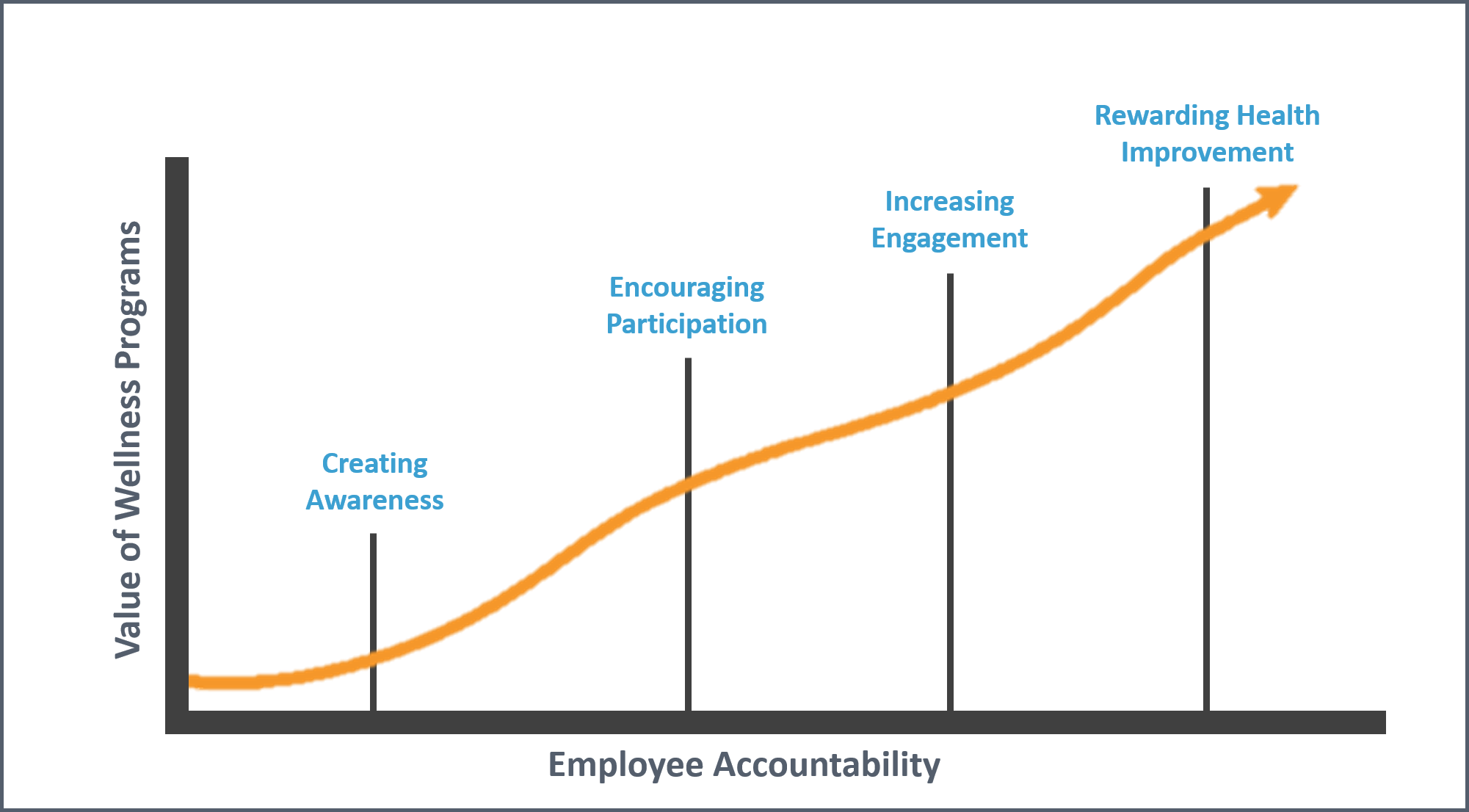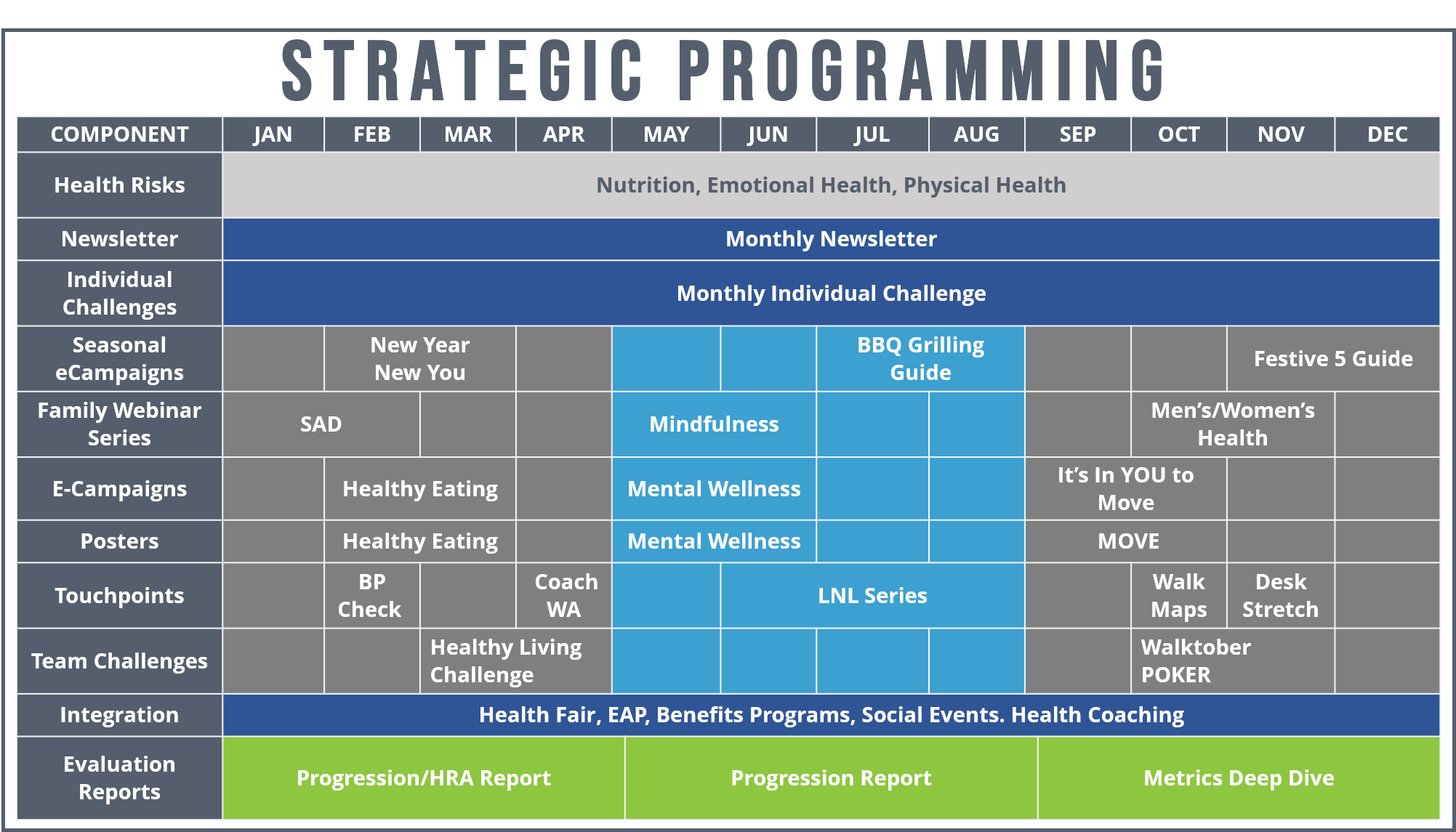
Meaghan Jansen reflects on a recent Workplace Wellness Champion Series session and shares some thoughts on how to best approach workplace wellness programming.
When it comes to workplace wellness, it’s best to avoid approaching it as a project-based initiative. While newsletters, health fairs, workshops, and office yoga can be great ideas, one-off initiatives are not enough. Instead, strategic programming is needed to see true value and results. A strategic approach leverages the organization as a whole and connects wellness with how the company operates on a day-to-day basis including its programs and processes.
A key piece of information that organizations often don’t recognize is that the perceived value of your wellness program is directly related to employee accountability. That means, as the effort required on the part of the employee increases, so does the value the program has to them. This is why awareness-based programs generally do not produce the results that organizations are looking for. Instead, organizations must carefully craft their program in a manner that provides opportunities for employee accountability to build and grow.

Perceived value of your wellness program is directly related to employee accountability.
Each component of your wellness program will fit into one of four categories:
Creating awareness
Content such as reading material, newsletters, media boards, and posters share relevant health and wellness information with employees and help spread awareness of your wellness program.
Encouraging participation
Initiatives such as workshops, health fairs, and health coaching take things a step further and require employees to take action. They register for a workshop or book an appointment with a health coach so they can attend and participate in the initiative.
Increasing engagement
Engagement builds on participation and places more accountability on employees. It’s important to highlight a key difference between participation and engagement. Using an example, participation is the employee signing up for a workshop while engagement is taking the information from that workshop and implementing it into their life.
Rewarding health improvement
This is the ultimate goal of wellness programming. It’s the overall improvement in employee health and well-being that results from implementing habits via engagement with the program.
An effective wellness program leverages each of these components and uses them collectively. Awareness material is an essential first step in developing a wellness strategy. It informs employees of your program and ensures that they have access to useful and relevant information. It also primes employees and makes them more likely to take the next step in accountability, which is to participate and engage in your program’s wellness initiatives.

An example of strategic programming for a wellness program focused on specific health risks: nutrition, emotional health, and physical health.
When developing a strategic plan for your wellness program, it’s best to identify specific health risks that you will focus on and organize your game plan around those. There are many aspects of health and wellness, but to be effective, your program needs to address topics that are relevant to your unique population of employees. (You can read more about how to do this HERE.)
While some organizations like to build wellness around special health promotion months, month-to-month topic shifting doesn’t offer enough time for awareness to build into participation and engagement. A more effective approach is to schedule program components over the calendar year. This allows you to plan when information should be communicated, when workshops or campaigns will be implemented, and when to assess progress and program results. It also provides the opportunity to look at what else is happening within your organization over the course of the year and how you can best integrate wellness, which will help make wellness part of the company culture.
KEY TAKEAWAYS
- Awareness-only wellness programs will have low perceived value.
- Touchpoints should be visible, organized, intentional, and connected.
- There is a need for robust programming to ensure optimal engagement.
- Identify specific health risks on which to focus your programming.
- Designing a wellness program with the full year in mind produces a more effective and integrated program.
Need some more assistance?
Get your FREE Corporate Wellness Membership 90-Day Starter Kit to get you started! Employee Wellness Solutions Network can help you create a healthier culture resulting in a more profitable and successful workplace. Our memberships give you access to services including corporate wellness specialists, trainers and health coaches to help you create the best strategy for your organization. To learn more about the memberships, visit Employee Wellness Solutions Network.
